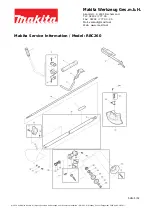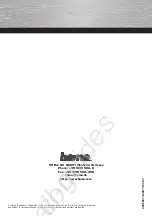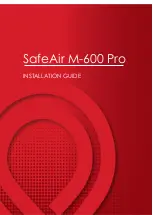
Einbau- und Betriebsanleitung
Installation and Operating instructions
Instructions de montage et de service
5751-8010
20
07/2013
Check temperature measurement.
Coordinate measures with manufacturer.
Checking control system
The stability of the control system must be checked. The desuperheater should ideally remain in position when the target
value has been reached. Instable control systems (constantly moving back and forth one step) cause premature wear. In
this case please contact the manufacturer.
When operating electric actuators, the interval between changing the direction of the actuator should be at least 200 ms.
The minimum tracking time in one direction should not be lower than 60 ms. and a maximum of 1200 switches per hour.
In order to prevent premature wear of the control valve, oscillations in the closing range must be avoided.
6.2
Removal
Before removing the desuperheater from the system, ensure that both the steam and water pipe work are pressure less and vented.
Isolate any electrical supplies to the actuator and/or ancillaries.
WARNING
:
Prior to disconnection, vent and remove instrument air supply piping.
Unscrew the yoke stem clamp from the desuperheater. Remove the lock nut from the yoke bottom and lift the actuator using lifting
lugs. It is recommended to have a 300mm distance above the actuator for ease removal & maintenance.
The desuperheater may now be removed from the system. Lift the unit by means of straps around the body. Do not attempt to lift the
desuperheater by the yoke, actuator or any of its accessories
6.3
Disassembly
The desuperheater can be disassembled, most easily when in the horizontal position with the body extension pipe(11) section
clamped firmly in the vice. Grind off the nozzle tack welds, using any standard type of angle grinder. Make sure that the weld is
removed sufficiently to allow rotation of the assembly nut without fouling.
Remove the tack weld and unscrew the assembly nut (8) by rotating anticlockwise. Note that the threading on the body extension is
right handed. Tapping the nut with hammer may facilitate removal. Note that the threading on the cylinder housing is left handed.
Please be careful not to damage the body and spray cylinder threading.
6.3.1
Cylinder Housing
Once removed, inspect the condition of the cylinder housing(1) internally. Scratches and dent marks may be removed by polishing operation.
Debris can be removed from the nozzles by blowing through with compressed air.
Inspect the nozzle atomizer (2) outlet holes. These should not show any undue wear, roughness or damage.
6.3.2
Nozzle disassembly
Remove the tack weld on the nozzle and unscrew the nozzle using the two pilot holes.
Remove the grafoil seals without damaging the internal surface.
Remove the spin plate (3) and clean& polish the surface with cloth.
6.3.3
Packing box
Remove the packing flange (17), top guide(16),all packing rings (15),bottom guide(14) from the body.
Clean the stuffing box carefully, using a rotating wire brush and/or honing device.






































